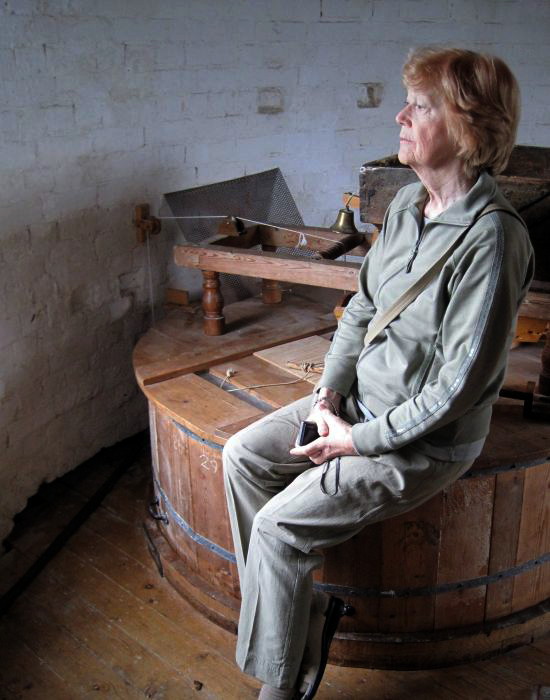|
Fascination with windmills has led to the publication of many books
on the subject. Some concentrate on their
design, equipment and machinery; others on their history; and some
have laid stress in words and pictures to their supposedly
‘romantic’ side. While one would not argue that a windmill
standing on a distant rural skyline, its slowly-revolving sails
glinting in the sunlight must have appeared romantic, any
romance in the life of the miller is not borne out by the facts; his
was taxing and sometimes dangerous work, as well as being a business
prone to the vagaries of the weather and the commodity market.
Windmilling was to suffer a rapid decline from the mid 19th century
as more modern production methods took over. Fortunately, some
windmills survived into the preservation era, in a few cases being
restored to working condition by dedicated enthusiasts, while others became
static exhibits or private dwellings.
This book attempts to touch on all the aspects of the subject,
both real and imagined, although that was not the original
plan. The idea first arose from an interest in local history
and the simple wish to place on record the windmills in and around
the town of Tring in Hertfordshire. But it soon became
apparent that certain peripheral and technical explanations were
needed in order to help the uninformed reader understand the subject
more fully. Thus, the original idea grew until eventually it
covered most facets of windmilling, including a section
on literary allusions to windmills.
Books of this sort always rely heavily on what has been written
before by others more versed in the subject. This is
particularly so with windmills, for of those that remain, very few are in
working order. Our thanks therefore go to those writers
whose research has paved the way, and especially to Stanley Freese
(1902-72), a millwright and author who wrote much about the subject
during the 1930’s and beyond, when more old windmills were standing ―
although often in derelict condition ― and when their heyday was
still within living memory.
The authors stress that neither is a professed expert on windmills,
nor on any aspect of grain milling past or present. Thus, we
hope that readers will forgive any errors which, despite careful
checking and review, have crept into the text.
Ian
Petticrew and Wendy Austin.
Tring, 2010.
――――♦――――

When a windmill is at rest, its stone
floor is an ideal
place for a little quiet contemplation
ACKNOWLEDGEMENTS
We take this opportunity to thank the many individuals who
gave their time, reviewed our text, supplied information
and lent photographs: especially Michael Bass, Catherine Bushell,
Sandra Costello, Tom Derbyshire, Mary and Michelle Evans, Jill
Fowler, Liz Griffin, Diane and Stewart Ivory, Terry and Jill
Jenkins, Kate and Peter Hoskins, Linda McGhee, Peter Keeley, Paul
Messenger, Heather Pratt, Ann Reed, Keith Russell, Pete Mayne, and
Alasdair Simpson.
We are also grateful to the staff at the Centre for Buckinghamshire Local
Studies who, as always, have been patient and helpful over our
enquiries whilst researching this book, and to The Hertfordshire
Record Office, Cholesbury & St Leonards Local History Society, and
Pitstone Local History Society.
――――♦――――

<>
|